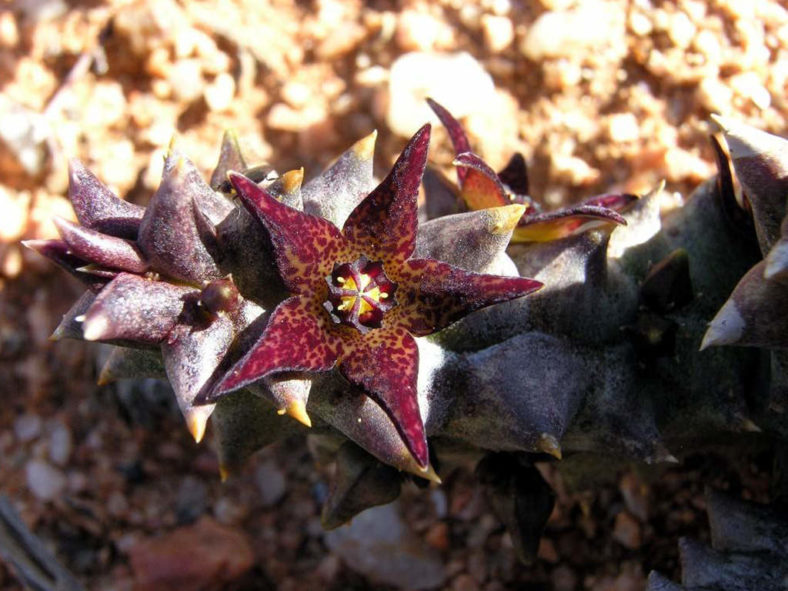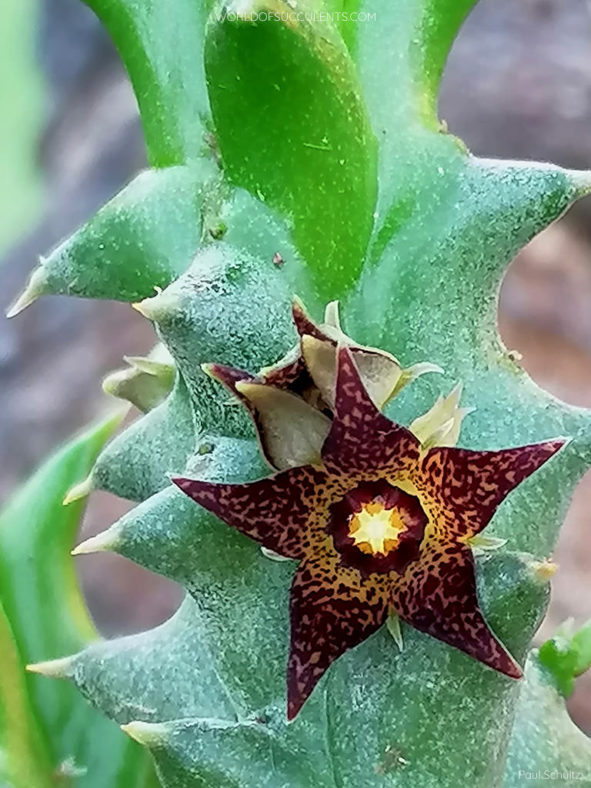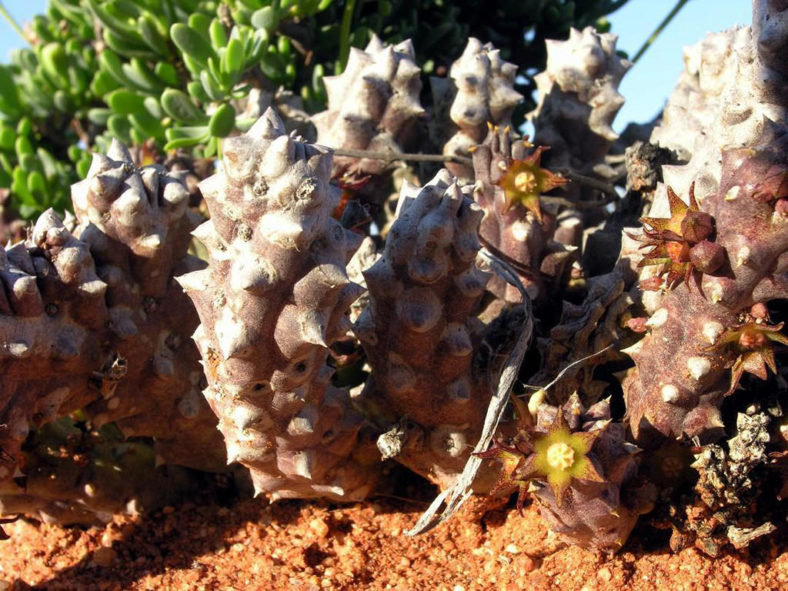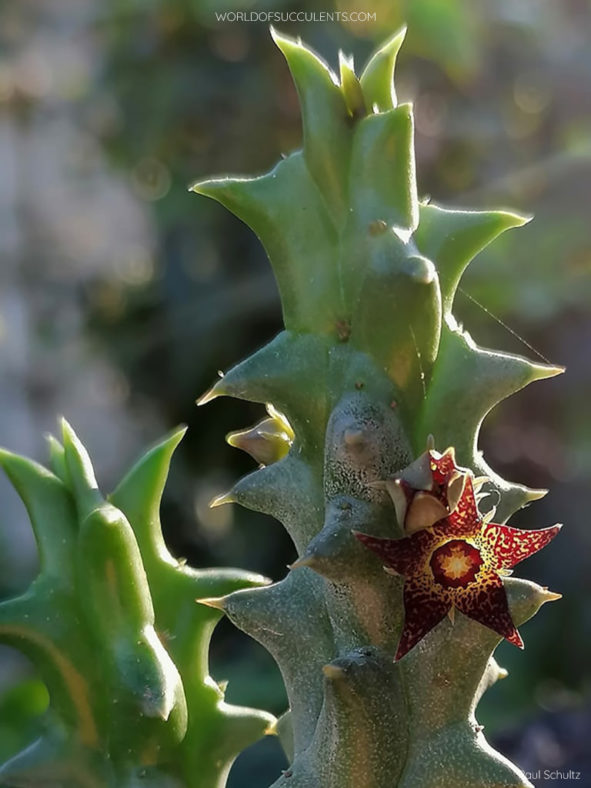Scientific Name
Quaqua acutiloba (N.E.Br.) Bruyns
Synonym(s)
Ceropegia acutiloba, Caralluma acutiloba, Caralluma wilfriedii
Scientific Classification
Family: Apocynaceae
Subfamily: Asclepiadoideae
Tribe: Ceropegieae
Subtribe: Stapeliinae
Genus: Quaqua
Etymology
The specific epithet "acutiloba (a-KEW-ti-low-buh)" means "having pointed lobes; having pointed stems" and refers to the tips of the corolla lobes.
Origin
The native range of Quaqua acutiloba is from Aus in southern Namibia to Laingsburg in the Western Cape province of South Africa. It usually grows in gravelly and flat, low-lying areas.
Description
Quaqua acutiloba is a small succulent that forms clumps of decumbent stems with conical tubercles joined into 4 to 5 angles. The stems can grow up to 6 inches (15 cm) long and 0.8 inches (2 cm) thick. Each tubercle is tipped with a sharp, hardened yellow tooth.
The flowers appear in clusters of 1 to 3 in the grooves of stems in fall, developing in succession. The corolla is wheel-shaped to slightly bell-shaped, with five spreading lobes, and can reach up to 0.6 inches (1.5 cm) in diameter. It varies in color from uniformly purple-black to mottled with purple-black on yellow-green to uniformly yellow-green, with the area around the center usually paler than the rest. The corona is a dark maroon to red or yellow and can reach 0.15 inches (0.4 cm) in diameter.

How to Grow and Care for Quaqua acutiloba
Light: Q. acutiloba grows best in full sun or partial shade. It will benefit from light shade during the hottest summer days. Indoors, place the plant near the brightest window in your home. It will stretch if it does not have enough sunlight. Avoid abruptly moving plants adapted to lower light levels to full sun to prevent sunburn.
Soil: Use commercial potting soil mix for succulents or prepare your own with 50 to 70 % mineral grit, such as coarse sand, pumice, or perlite.
Temperature: This plant thrives in warm outdoor environments with low to moderate humidity. It does not like winter cold and should remain fairly dry and warm during its winter dormancy. Q. acutiloba can withstand temperatures as low as 35 °F (1.7 °C). USDA Plant Hardiness Zones 10b to 11b, 35 to 50 °F (1.7 to 10 °C).
Watering: Q. acutiloba has typical watering needs for a succulent. Water your plant thoroughly during the growing season, from spring to fall, and allow the soil to dry between waterings. Do not water in winter. The plant goes dormant in winter and needs almost no water, about once a month.
Fertilizing: To keep your plant healthy and thriving, fertilizing is a good idea. Feed with water-soluble fertilizer diluted to half the recommended strength only when the plant is actively growing.
Repotting: Repot your plant in spring just before the growing season. Q. acutiloba has shallow roots and does not require too much soil to grow. Pick a container with drainage holes.
Propagation: The best way to propagate this succulent is by stem cuttings. Take cuttings during the growing season to ensure good rooting. Q. acutiloba is also easy to grow from seeds. Sow the seeds in spring.
Learn more at How to Grow and Care for Stapeliads.
Toxicity of Quaqua acutiloba
Q. acutiloba has no toxic effects reported. It is safe around pets and humans.
Links
- Back to genus Quaqua
- Succupedia: Browse succulents by Scientific Name, Common Name, Genus, Family, USDA Hardiness Zone, Origin, or cacti by Genus
Photo Gallery
Click on a photo to see a larger version.


